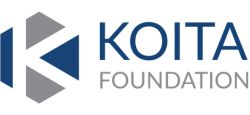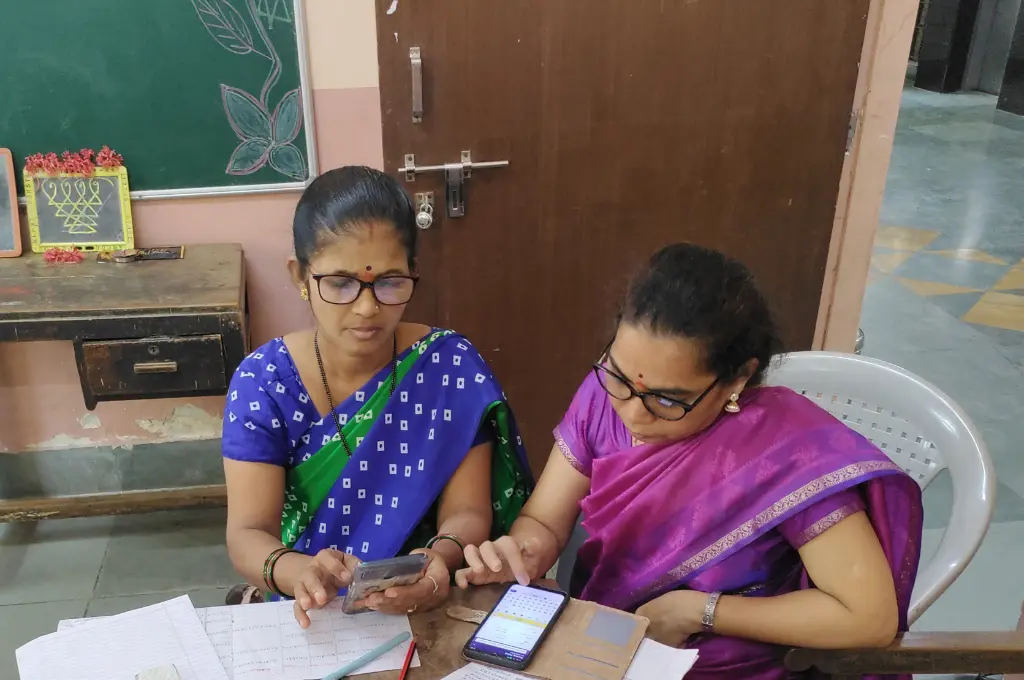In the social sector, the adoption of technology is widely viewed as a means to achieving scale. However, there’s also a lot to be said about its role in easing frontline workers’ efforts and improving operational efficiency and the quality of outcomes. To better understand these specific benefits of tech adoption and the impact it can have on a community-based organisation, we spoke with team members at Foundation for Mother and Child Health (FMCH) India.
Working in the field of maternal health and malnutrition, FMCH identifies women from the communities in which it delivers its programme and trains them to become frontline workers (referred to as field officers within the organisation). These women execute four primary tasks—identify mothers with children in the first 1,000 days, understand the overall health/nutrition status of these women and their children through data collection, provide health/nutrition counselling to them on the basis of the data collected, and conduct regular follow-ups with them until the child is approximately two years old.
Today, technology acts as a critical enabler in the execution of these functions. In 2020, FMCH launched an application (or app) called NuTree, which was specifically developed to assist their field officers.
At this time, each field officer was working with approximately 200 families. The organisation believed that the use of tech could help in:
- Improving the accuracy and consistency with which field officers identified and conveyed contextually relevant health-related information to mothers.
- Tracking data better in order to prioritise service delivery to mothers and children who were at greater risk of malnutrition.
FMCH decided to take a phased approach to their tech adoption, designing the first version of the NuTree app to be multilingual and offline. It also contained a decision tree. Based on inputs such as (but not limited to) the height, weight, and diet of the mothers and children they visit, the app is able to instantaneously determine the health status of the recipients. It then presents the field officers with relevant health-related information to convey to the recipients as part of the counselling process.
Adopting a phased approach helped the organisation manage this change more effectively, and more features were added only after the team became familiar with the app. Subsequent additions included an automated scheduling feature and special protocols for severely and moderately malnourished children.
What changed?
1. Providing streamlined and consistent care
Using the decision-tree feature of the app prevented an information overload for both the field officer and the recipient, as only what was relevant to the recipient would be conveyed to them based on their context. In other words, this ensured that the information passed on was consistent across field officers and independent of their own ability to recall details.
The provision of such high-quality care has helped FMCH gradually reduce malnutrition by 80 percent in the communities with whom they work.
2. Prioritising at-risk recipients
The scheduling feature identifies which households a field officer needs to visit on any given day. This allows them to prioritise visits to at-risk recipients (based on their health status) and has resulted in a significant reduction in missed visits. The field officers also use the app to track visits made to each recipient and to update their health/nutrition status based on the information they receive through follow-up visits. This data helps them monitor the long-term health of each recipient.
3. Monitoring outcomes
Meanwhile, non-field teams use the data generated by the app to identify patterns that further inform how trainings are enhanced or content is modified.
Through the data captured using the app, FMCH is also able to track the steady increase in its outreach and the hours of counselling provided over the years—from 24,000 hours (across 7,107 families) in 2020–21 to 1.71 lakh hours (across 35,080 families) in 2022–23.
4. Improving frontline productivity while lightening load
Shifting to the app also lightened the physical load on the field officers. “Before the app was developed, we had to carry information, education, and communication (IEC) materials with us into the field. And the distances we had to travel weren’t short, so carrying these around often took a toll on us physically. But now, we only need to carry our phones into the field,” says Asma Khan, a former field officer who is now working on developing a WhatsApp chatbot for the organisation.
As a result of these improvements, each field officer is now able to work with approximately 350 families instead of 200.

Creating a conducive environment for tech adoption
To maximise the benefits of tech adoption, it is important to create the right conditions for it. Based on their own experiences, the FMCH team outlined a few principles that amplified the impact of adopting the NuTree app.
1. Train, train, train!
Frontline workers at FMCH undergo rigorous training so that they’re best placed to utilise the various tools at their disposal, particularly the app. Information on the purpose of the app, how it can be used as a tool for anthropometry, and its scheduling/tracking capabilities are included in the training module. The training is also not a one-time event, as it is critical to ensure that best practices are not only imbibed effectively but also updated regularly.
Even aspects such as managing a mobile phone and keeping it clean are incorporated into the training rubric, as maintaining hardware plays a key role in seamless use of the app. Instructions related to the use of Google Workspace, e-mail, and Zoom on the phone are also part of the training.
2. Monitor usage and listen to feedback
When the app was first introduced, there was a degree of resistance across various levels of the organisation. According to Bhagyada Jamsandekar, she and her fellow programme managers at FMCH were concerned about whether the field team would be able to familiarise themselves with the app and ensure that accurate data is consistently fed into it. Similarly, the field officers had apprehensions about moving away from the counselling procedure that they were used to.
The organisation responded to these concerns by not only designing the app to be user-friendly and familiarising the field officers with it through intensive training, but also monitoring their use of the app to understand and improve the user experience. In addition to the inclusion of the scheduling feature, simplifying the decision tree was a major change that emerged through this exercise.
3. Maintain the human touch
While technology makes it easier to execute certain tasks, organisations must leverage it without taking away the human element. FMCH’s CEO, Shruthi Iyer, elaborates on this with the help of an example. “We released the app during the pandemic, and everybody was using it seamlessly to carry out counselling over the phone. But when the lockdown ended and we went to the field, we noticed that the field officers would often just look at their phones and not the person with whom they were speaking. We realised that something was missing in our training. The most important part of ‘healthcare’ is ‘care’. ‘Health’ is the information that you provide, but how do you demonstrate care throughout the interaction with the mother? So, we went back to the drawing board and revamped the training and content that goes on to the app. For instance, it now includes a prompt/instruction for the field officer reminding them to tell the mother about the app so that she feels included in the conversation. Today, when a field officer interacts with a mother, the phone is always positioned such that the mother can also see what’s being filled in.”
In talking about the need for retaining the human element while implementing tech solutions, Shruthi also emphasised the importance of ‘discernment’. She says, “The app may instruct you to counsel a mother on lactation, but if you notice that she’s struggling, you may choose to take a step back and ask her if she’d like to have a glass of water.” Relying on this discernment is a fundamental aspect of the training that field officers undergo, and it helps them offer better care to the mothers they counsel.
Build for tomorrow, not today
In addition to these principles, Shruthi mentions two other factors that contributed to their successful tech adoption: the presence of long-term tech funding and the enthusiasm of a team that was interested in and familiar with technology. “Bringing in team members with expertise in different areas—nutrition, tech, training, behaviour change—and getting them to work together is what has led us here today,” she says. Leveraging her background in tech prior to joining FMCH, Shruthi adopted a hands-on leadership approach to bring the team together and execute the organisation’s vision. Moreover, the team’s willingness to make the shift work helped in creating an environment that enabled the adoption of tech, resulting in it becoming a key pillar of their operations today.
Shruthi also stresses that nonprofits seeking to adopt tech should not view it as a goal with a definite end point. “Realities keep changing. What you know right now about the community is just the minimum of what you will know if you continue to work there. You will only learn more, and you will only be presented with deeper questions. So, don’t just build for the problems of today. Technology is advancing very fast, and so are people. Build for the problems of tomorrow.”
Elaborating on what technology for the future will look like for FMCH, Shruthi says “I am keen to explore what feminist-led building of technology looks like, where the women using the product are at the centre. Building this technology doesn’t happen in fancy offices—but with the women, and by them. Tech in the hands of women will change communities. This is the future we all need to build for.”
Based on inputs from Shruthi Iyer, Asma Khan, Bhagyada Jamsandekar, and Shubhangi Bhoite.
Sneha Philip contributed to this article.
—
About Shruthi, Asma, Bhagyada, and Shubhangi
Shruthi Iyer is the CEO at Foundation for Mother and Child Health (FMCH) India. Prior to this, she has worked in full-time and consulting roles across sectors focusing on strategy, fundraising, technology roll-outs, and programme development.
Asma Khan is a product associate with FMCH India. She was a field officer for approximately three years and is now working on developing a chatbot for mothers from under-resourced communities.
Bhagyada Jamsandekar is a senior manager with FMCH India. She is a nutritionist who has worked in the maternal and child healthcare management sector for the past nine years in rural and urban areas across India. At FMCH, she has been developing and scaling programmes for sustainably managing the burden of malnutrition in communities.
Shubhangi Bhoite manages the Mumbai operations at FMCH India. She has a background in social work and 15 years of experience in addressing maternal and newborn health. She has been with FMCH for more than seven years, focusing on community leadership building and working with various government officials on projects such as the Integrated Child Development Scheme (ICDS).
—
Know more
- Read this article on the factors critical to successful technology implementation at nonprofits.
- Learn more about the role of nonprofit leaders in an organisation’s digital transformation.






